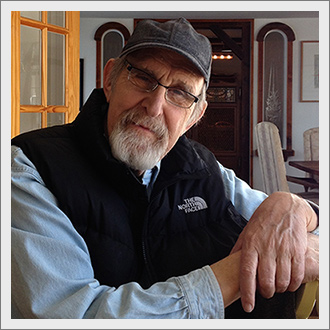“Collectors find their own meaning in the art they gather.
That’s the point of it all. I connect with the spirit and insights
a piece produces in me, more than the object itself.”
Through his life in academia, Bud became involved in a great deal of travel, which led him to artists all over the United States, as well as in the former Soviet Union, Estonia, Mexico, England, Scotland, Norway and eventually, Zimbabwe. From the beginning, there were two characteristics that Bud looked for in the pieces he collected. First, he only acquired work from artists he knew personally. Second, the piece had to strike him –

which meant that it not only had to catch his eye, it needed to present an energetic form that transcended the physical realm. His criterion was that of impact, not value. This passion has driven Bud to explore sites around the globe with the sole aim of experiencing sculpture, and its creation, in its native environment. Two weeks after seeing a single piece of Shona sculpture owned by a friend in the U.S., Bud boarded a plane to sub-Saharan Africa. There, he was introduced to five or six artists, all who later became significant players in the Shona movement. Bud would accompany
The sculpture of Bela Basci, a Hungarian artist working in Santa Barbara, presents another highlight of this collection. For Bud, Bela’s work holds an aesthetic and spiritual attraction that is plainly incomparable. “Bela captures humor, drama, and an incredible sensitivity to the human body in his work – all of which is executed with enormous sophistication.”
Bud does not have any favorite pieces in this collection. “Each one is my favorite at the time that I am experiencing it. When I’m interacting with a piece, there is nothing else on my physical radar. There isn’t a single work in this collection that I don’t cherish.”